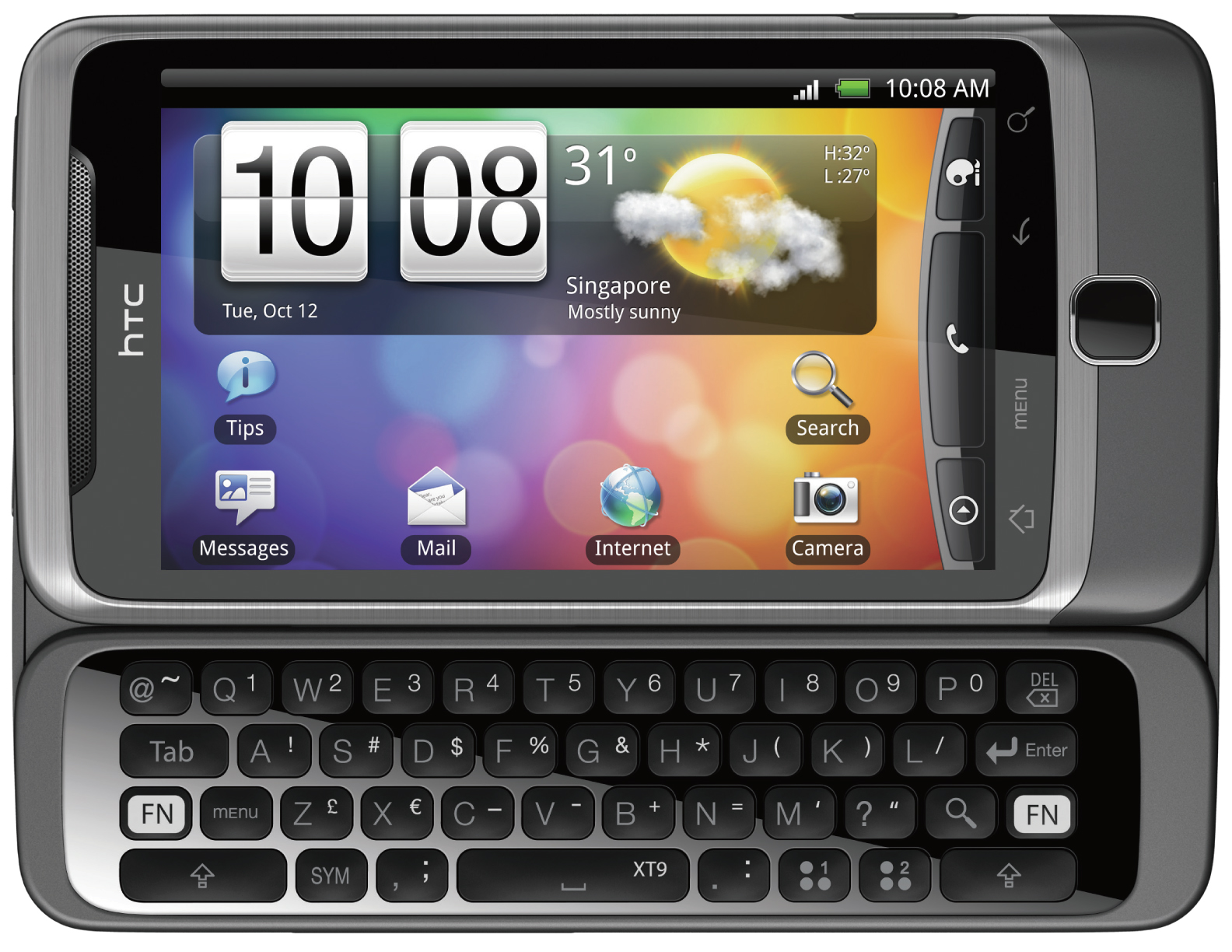There’s one kind of buyer for this phone. Any other owner will be vaguely dissatisfied that you can’t keep it in your pocket if your pants don’t have a belt. That you have to be ultra-careful not to drop it. And that’s it. That’s the very short list of deal-breaking flaws of the Desire Z. It’s heavy, and a little fragile.
Are you that buyer of the HTC Desire Z? Yes, if you will tolerate its beastly proportions because you want more than a phone in your pocket. Yes, if you basically want a pocket computer in your pocket that you can phone with. Not a big silly one, like the old Nokia Communicator, something powerful, but still bearable to take into a nightclub.
No ad to show here.
In a nutshell, this is an Android handest from HTC with an enormous touch screen the covers the entire front, and a flip-out full size QWERTY keyboard, and lashings of connectivity and hackability.
The Desire Z (so named for the hinging action of the keyboard) is aimed at people that want to browse on a big screen, type on a big keyboard, and are not primarily multimedia or social media centric.
It’s certainly not for the teenage/hipster arty set. The camera is a dubious piece of 5MP dodgery, the supplied stereo headset is only acceptable, and the speaker will never impress schoolboys smoking a brave fag on the way to class tinnily broadcasting their love of that Rebecca Black tune.
But you if want to browse, it’s a star, with a big thumbs up to the Webkit browser that has yet to choke on a Wesbite, with fast page loads thanks to 14Mbps HSDPA. The phone app and contacts works well, and get very decent call quality. It has excellent messaging built in, although you almost certainly want to replace the default mail app with K-9, the calendar with Jorte and install BT File Transfer to solve the remarkably poor file browsing and transfer functionality. But that’s the beauty of Android.
The main criticisms of the interface are largely Android-generic: the difficulty in selecting, copying and pasting text (like from a Web page into the phone dialler) and irritation of never quite being sure if an app is closed or in the background.
The HTC Sense UI is getting better all the time, although starting to get the Microsoft habit of trying to be cleverer than it really is with semi-functional enhancements and somewhat flaky web service.
There’s also the constant nagging sense that Google and/or HTC is sneakily borging your data. Every so often you realise that it has merged information that you never asked it to – connecting your Facebook accounts with your address book. I don’t want my friends Facebook profile pics appearing on my screen when they phone me, thank you. Neither do I want you to try force me to give you my email address and phone number so that you can link me to friends and contacts, thank you. Actually, bugger off, I share and link when and how I want.
Bottom line: a really excellent phone for phone hackers and remote working and easy connectivity. Did we mention it’s a bit bulky?
Who it’s for
- Mister My-phone-is-more-smarterer-than-yours One-Upman
- Those who still want a big touch screen, but prefer typing on a keyboard
- iPhone refuseniks that still want something kick-ass
Likes
- Nice big screen, and nice big keyboard
- Fast, responsive screen and interface
- Classy high-end metal finish
Don’t Likes
- Keyboard is not fingertip friendly, needs a little nipplet on some keys to let you locate your fingers haptically.
- Display does not auto-sense brightness. There’s meant to be a sensor, so maybe firmware bug
- Battery life is 2-3 days with only reasonable use, and being careful to turn off power gluttons
- Z-fold hinge sometimes feels slack, although isn’t – and prevents you using a protective case
- Extremely Mac unfriendly. HTC neither hears or cares about Macs, it seems, and Desire phones Bluetooth stack don’t talk to Macs, or sync with Macs. Welcome to workaround city.
